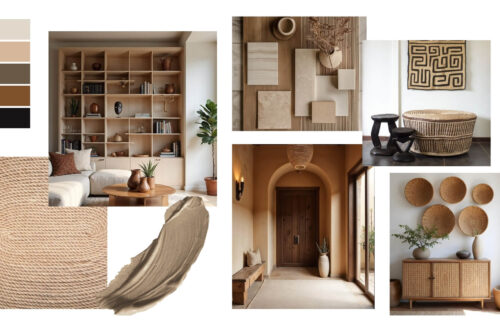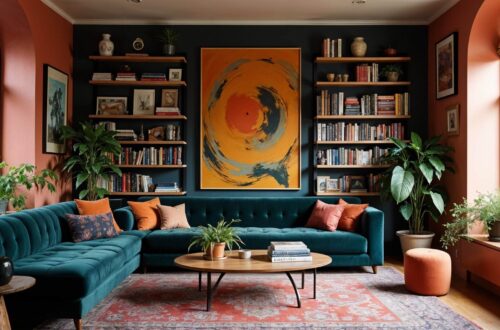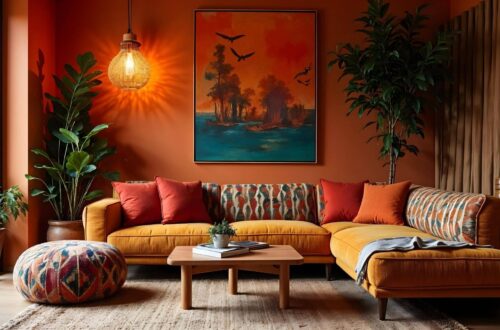Moroccan interior design brings together centuries of skill, trade, and influence. It uses techniques passed on and reinterpreted through generations and remains one of the richest craft traditions in the world.
Across Morocco, artisans specialize in every detail—tilework, leatherwork, wood carving, metal forging, wool weaving, lamp-making, and ceramics. These crafts shape entire homes in a style that feels layered and tactile.
Of course, Moroccan interior design doesn’t follow just one rulebook. The styles vary by region, climate, and history. While contemporary Moroccan design is exciting in its own right, this article focuses on the more traditional elements—the kinds of details you’d find in a riad courtyard or a craftsman’s workshop. Let’s take a closer look.
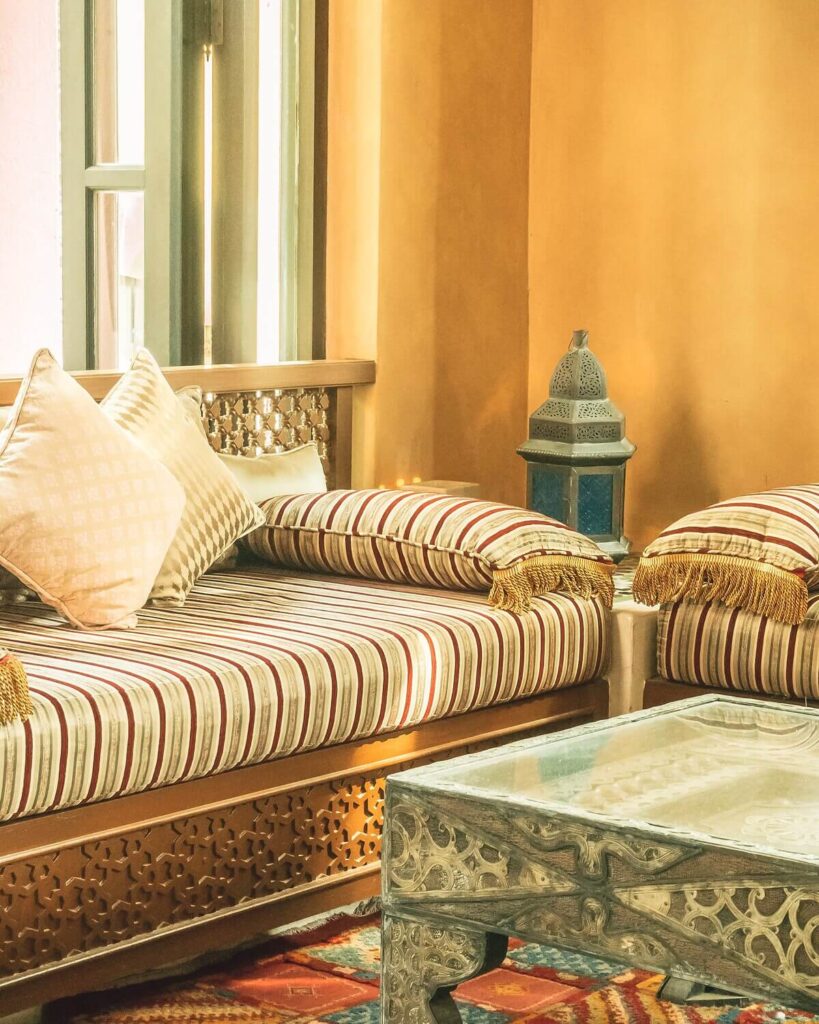
In this article:
The Foundations of Moroccan Interior Design
Morocco’s architectural and design identity is shaped by centuries of cultural exchange. Berber, Arab, Andalusian, and French influences have all left their mark, creating a layered aesthetic that continues to evolve.
Arches and Tall Ceilings: A Moroccan Signature
Walk into any traditional Moroccan home, and one feature quickly stands out—arched forms and high ceilings. These elements have deep roots in Islamic architecture and became central to Moroccan design over time.
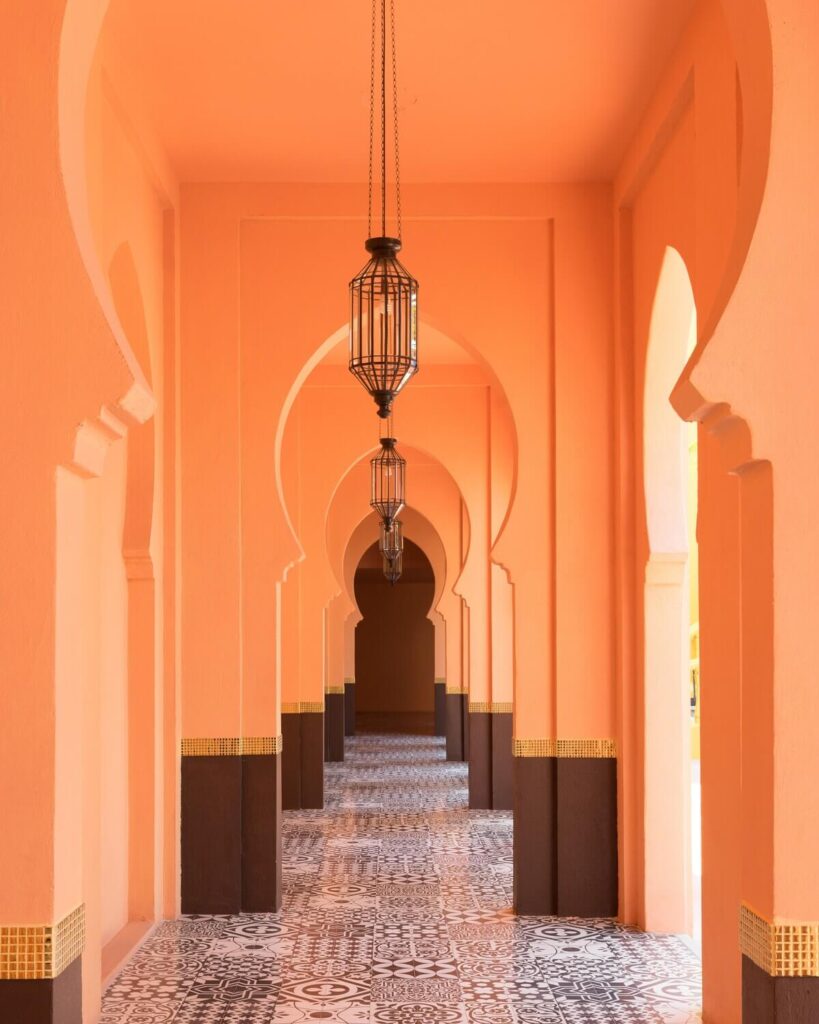
Tall ceilings were often seen in homes of wealth and prestige. But they weren’t just for show—they also made homes more comfortable during hot seasons, allowing warm air to rise and circulate. The visual effect, though, is undeniable: rooms feel open, airy, and grand.
Arches, on the other hand, are everywhere. You’ll see them in doorways, windows, and wall niches. Some are more ornamental, while others are structural. Even lanterns and carved wood panels often mirror the shape. It’s one of those motifs that ties everything together, both inside and out.
Morocco’s Incredible Tilework
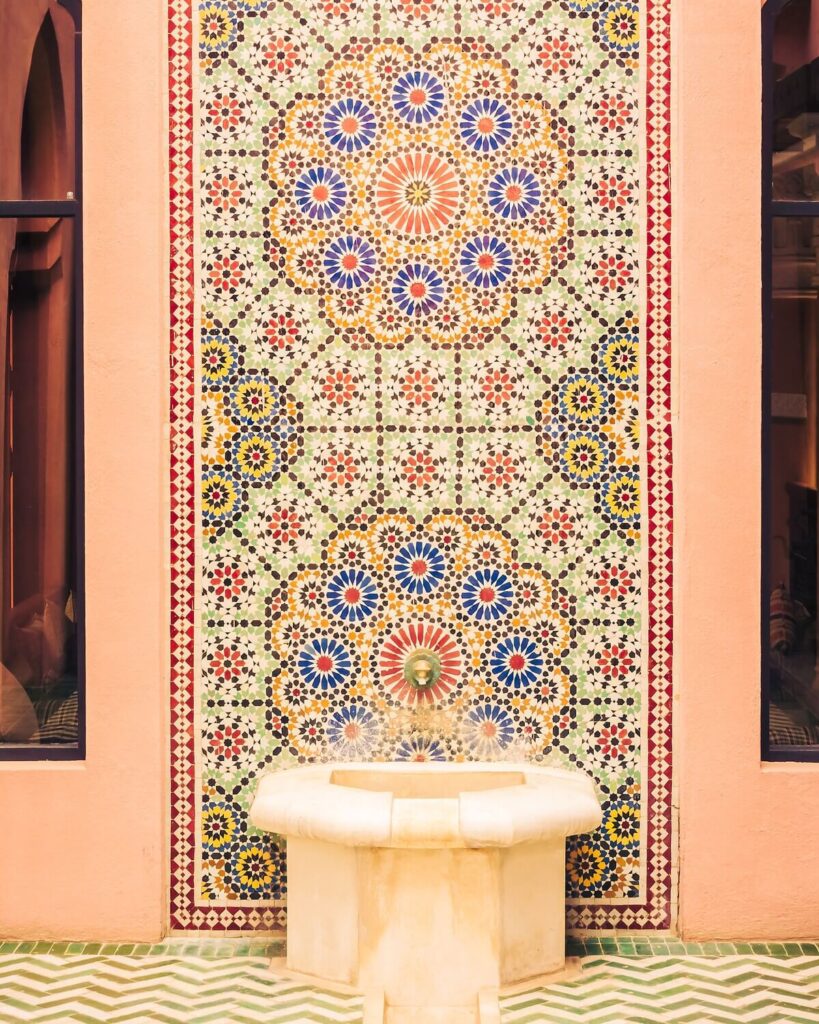
Tilework is one of Morocco’s most celebrated crafts, and it plays a huge role in interior design. The star of the show? Zellij. These hand-chiseled tiles are glazed and fitted together to form beautiful designs.
Zellij tiles first rose to prominence during the Almoravid and Almohad dynasties. Since then, they’ve become an essential part of Moroccan decor—from the most modest homes to lavish palaces.
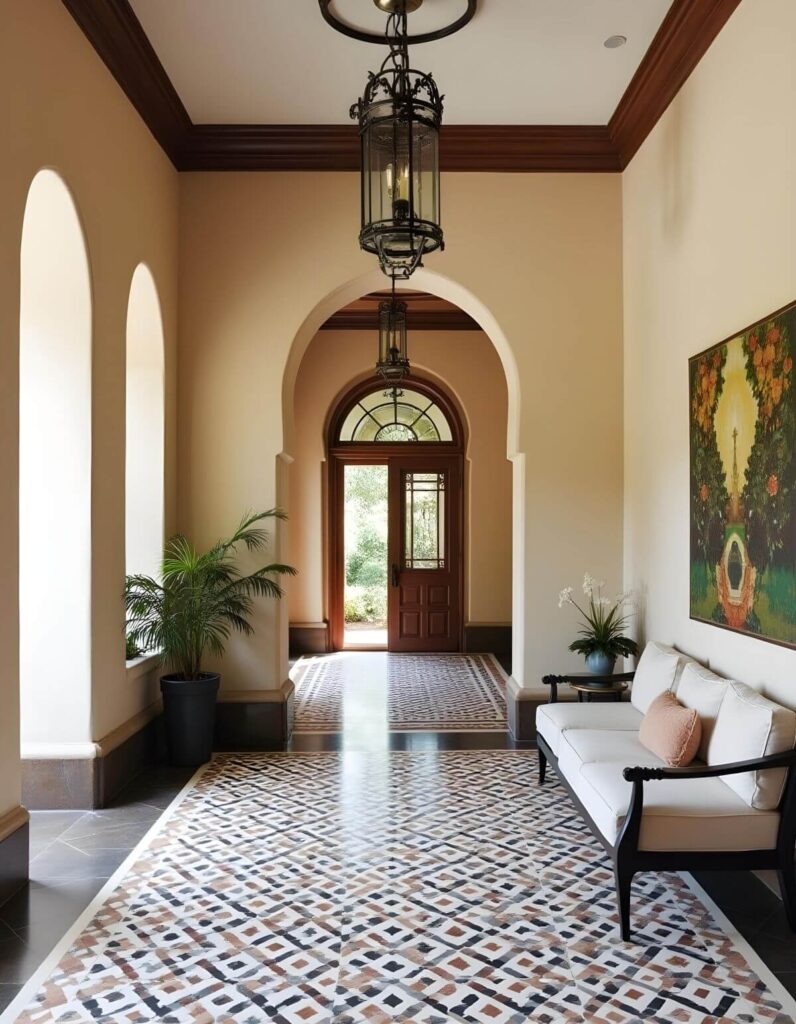
In interior design, these tiles appear in many forms:
- Entryways with tiled steps or patterned floors
- Kitchen backsplashes and countertops
- Bathrooms with floor-to-ceiling tiling
- Garden paths and courtyards
- Outdoor fountains and pools
They can be bold or more subdued, depending on color and placement. Some patterns are loud and joyful, while others are quiet and detailed. But in every case, they reflect remarkable craftsmanship.
Moroccan Color Palettes: From Earth to Jewel
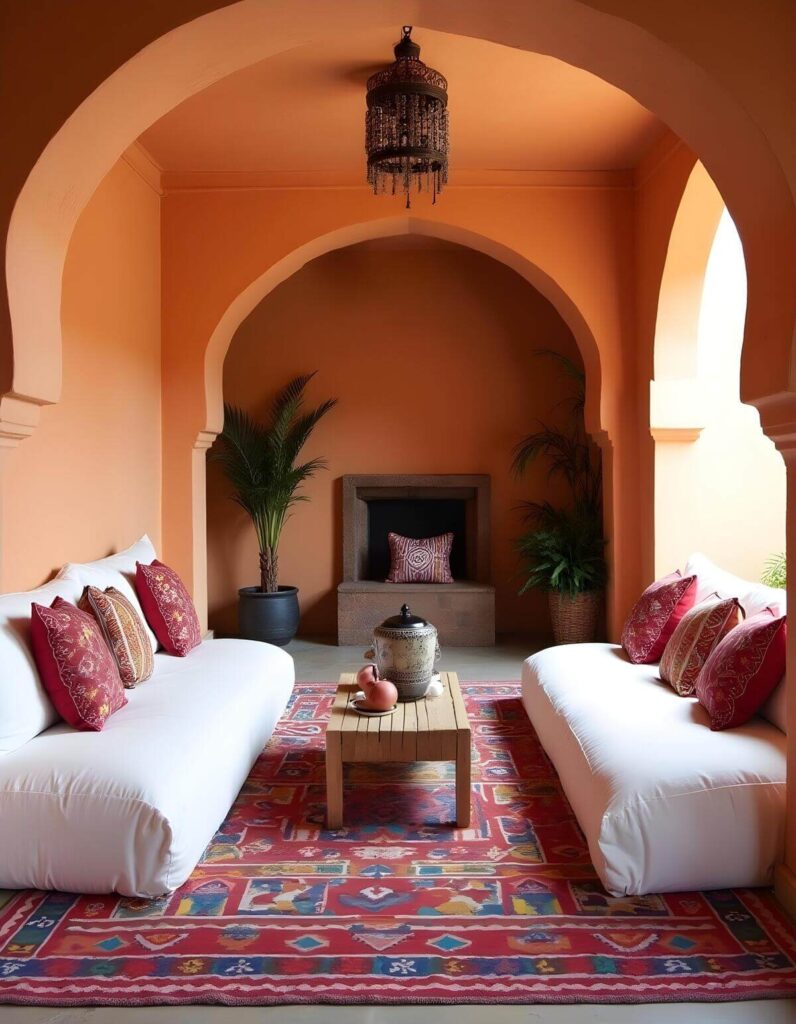
There’s no single color scheme in Moroccan interiors. The palette shifts with geography, tradition, and personal taste. You’ll find both muted earth tones and vivid jewel shades—sometimes in the same space.
Take Marrakech. Homes there often lean into saturated color—terracotta reds, cobalt blues, emerald greens—paired with patterned tiling and carved plaster. In contrast, coastal towns like Essaouira prefer softer tones. White, sand, taupe, and pale blue dominate, echoing the sea and the slower pace of life.
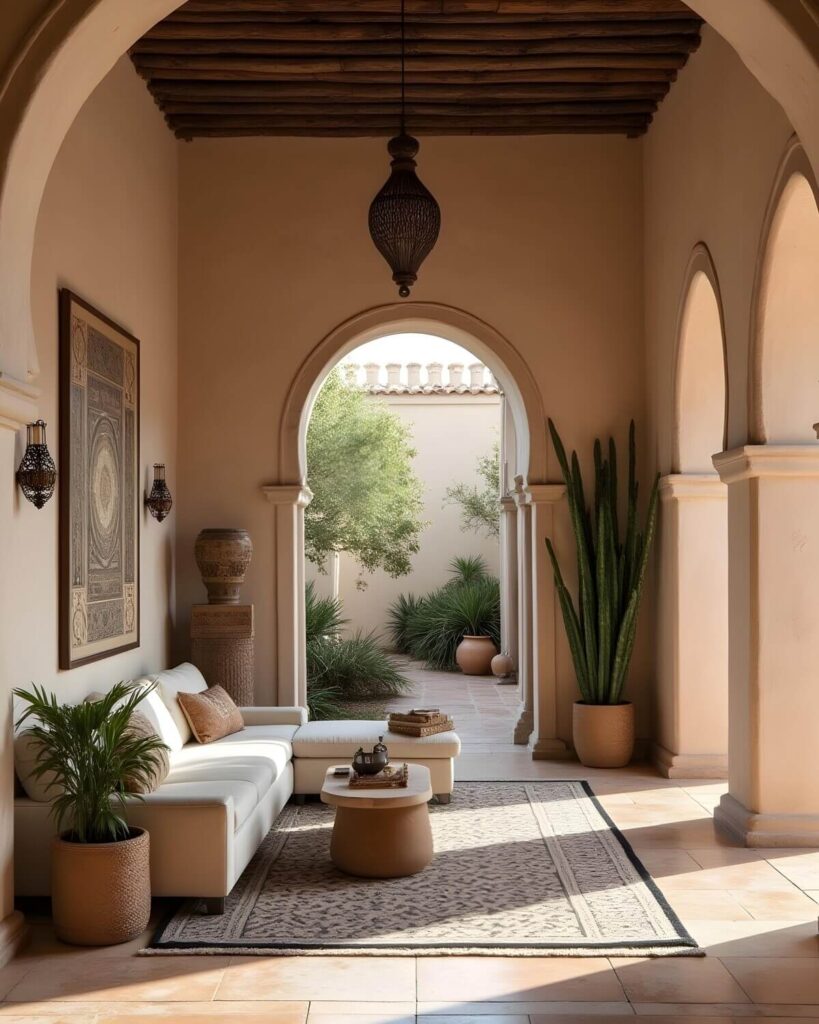
Then there’s Chefchaouen, a city painted almost entirely in blue. The origin of this tradition is often linked to the Jewish community, who painted buildings blue to symbolize the sky and spiritual connection.
These color stories reflect how Moroccan interior design adapts to every place and meaning.
Essential Features of Moroccan Interior Design
There are a few elements that show up consistently across traditional Moroccan interiors. Some are structural, others are decorative, but they all play a part in shaping the space.
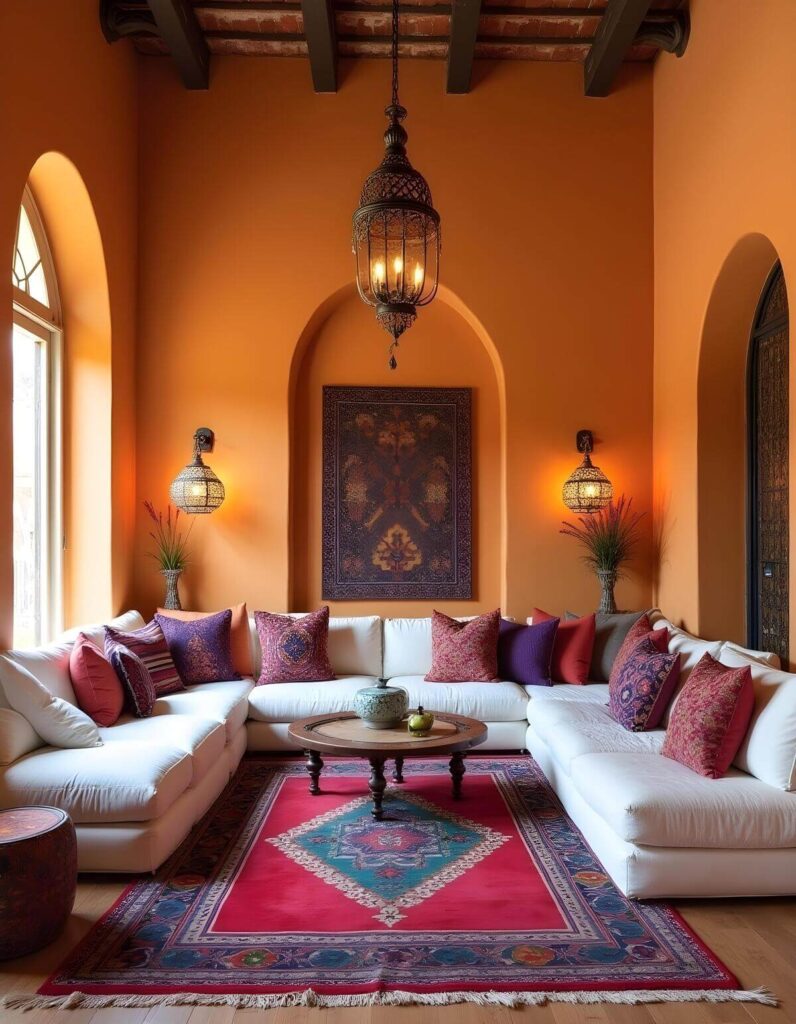
- Arched architecture: Used in doors, windows, and alcoves, arches are a staple of Moroccan design.
- Rugs with personality: Boujad and Kilim rugs bring bold patterns and color, Azilal rugs feel more bohemian, and Beni Ourain rugs offer a neutral, geometric softness.
- Relaxed seating: Low-slung benches, plenty of cushions, poufs, and even floor seating create a laid-back, social feel.
- Intricate detailing: From carved wood furniture to embroidered textiles, detail is everywhere. Nothing feels mass-produced.
- Unique lighting: Moroccan lamps are hard to miss. Brass lanterns, pierced metal pendants, and sculptural sconces cast moody shadows and glow beautifully at night.
You May Also Like:
– The 5 Moroccan Rug Styles That Make Every Step Special
– Moroccan Poufs: An Understated Luxury for Collected Spaces
Together, these features give Moroccan interior design its unmistakable charm—layered, inviting, and full of details that create an exquisite picture.
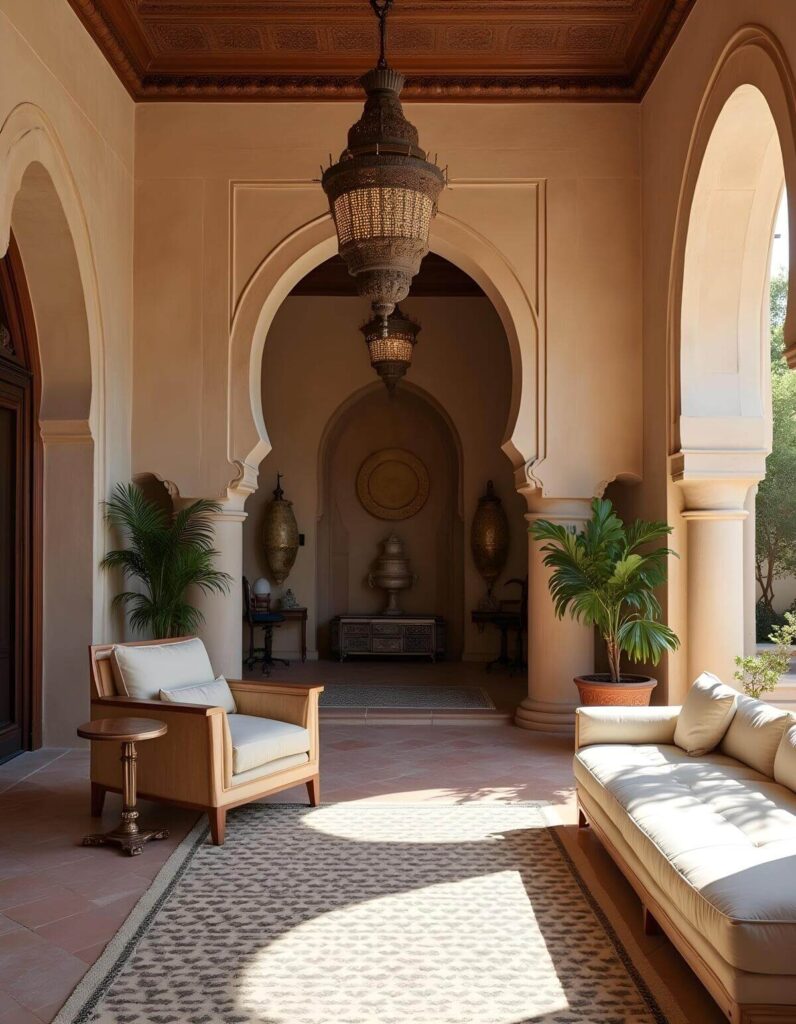
Moroccan Interior Design Examples
Moroccan interior design shifts depending on the space and materials. These examples show how traditional elements can be combined in different ways, depending on the atmosphere you’re going for.
A Seating Area That Balances Energy and Ease
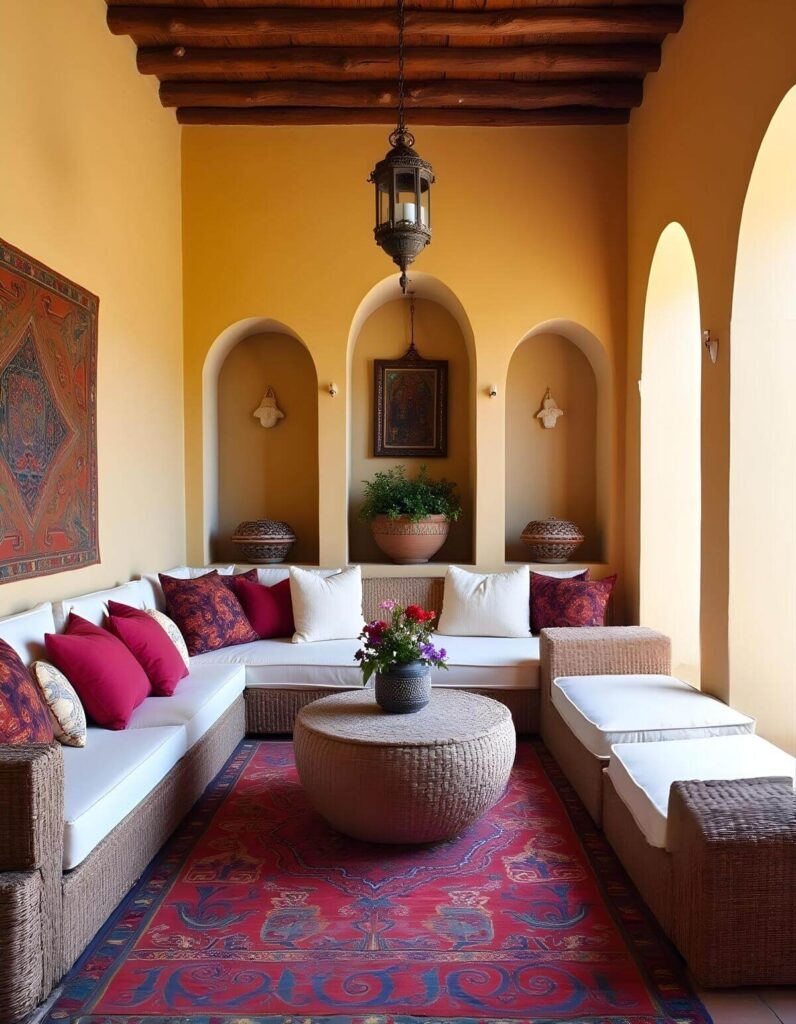
This kind of terrace is all about energy. A bright rug sets the tone right away. Woven furniture keeps things natural, while white cushions create balance. Add some colorful throw pillows, and it instantly feels inviting. Arched wall niches filled with Moroccan pottery bring in shape and texture without taking over the space.
A Coastal-Inspired Space
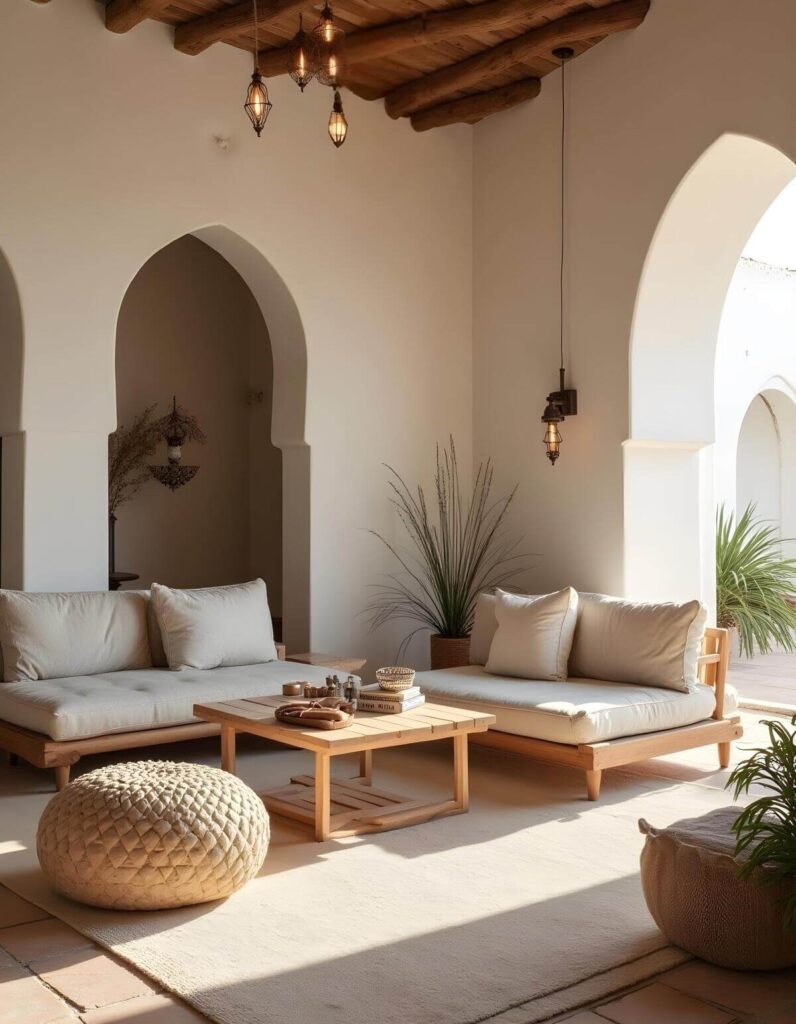
For something softer, go with a neutral palette—think beige, white, and warm wood tones. Cotton or linen fabrics keep it light. A few low pendant lanterns help add warmth in the evenings. This kind of setup works well in coastal homes or anywhere you want a breezy, relaxed feel.
You May Also Like: Modern Beach House Decor Ideas You’ll Want Right Now
A Casual Nook With Character
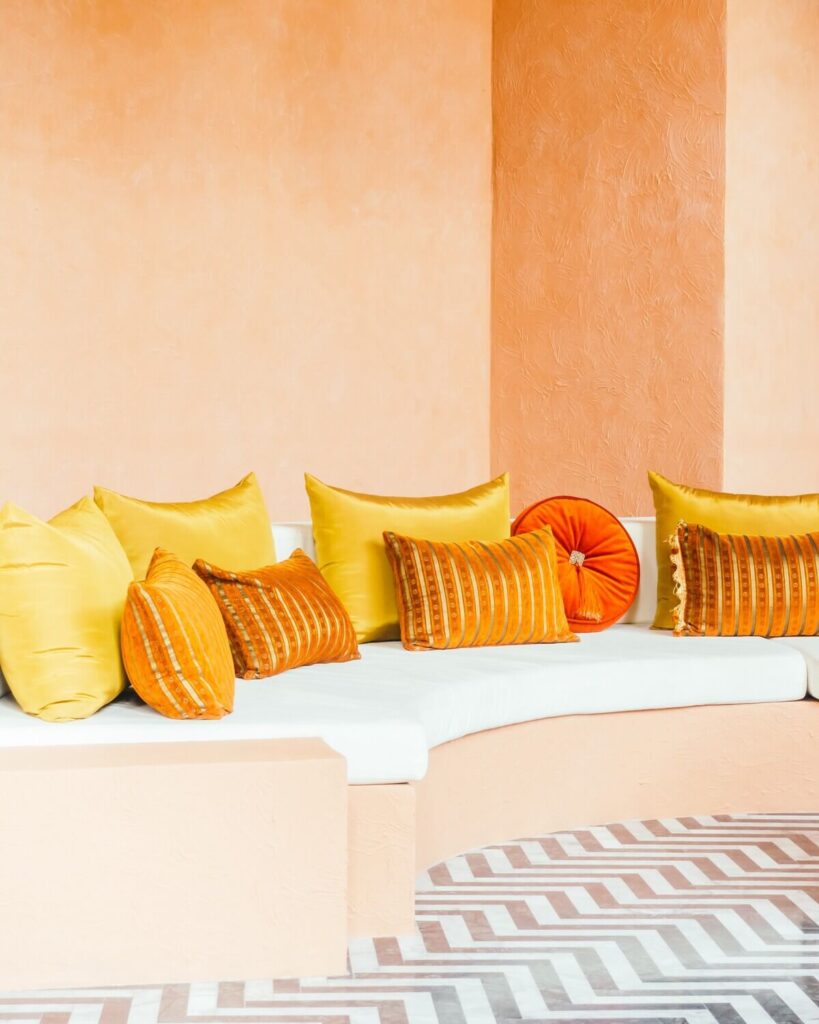
Light terracotta walls bring in warmth. Tiled floors add character. A built-in bench lined with cushions makes for easy, informal seating. Throw in a bunch of ornate pillows, and the space feels playful and comfortable.
A Living Room That Feels Like a Palace
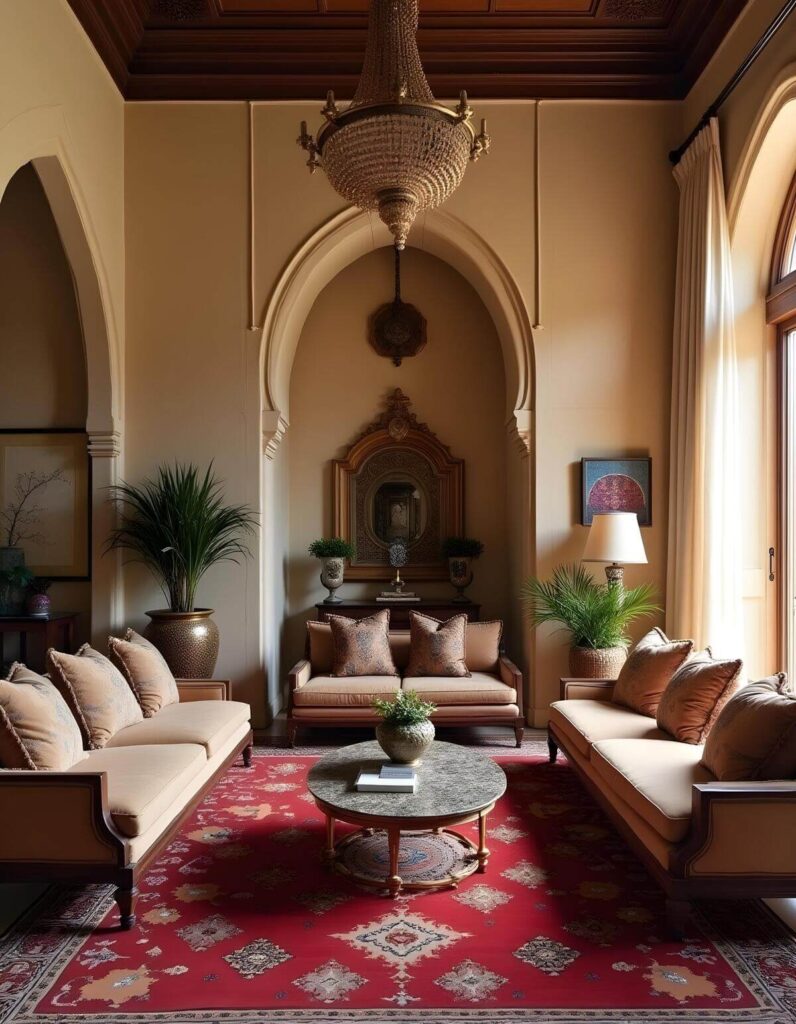
In more formal homes, the features get a little more dramatic. Think extra-high ceilings and tall arches that immediately draw the eye up. A bold rug—maybe in red or deep blue—anchors the room, while a chandelier adds a strong focal point. Lastly, golden accents bring in a bit of luxe without feeling too ornate.
Final Thoughts on Moroccan Interior Design
Moroccan interior design offers something rare—it’s rich in tradition, yet endlessly adaptable. With just a few well-chosen pieces or architectural details, you can bring this layered and thoughtful style into your own home.
If you’re drawn to handcrafted details, beautiful materials, and rooms that feel lived-in yet artful, Moroccan design might just be the style you’ve always needed.
Continue reading: Moroccan Tiles for Bathroom: A Stunning World of Style




